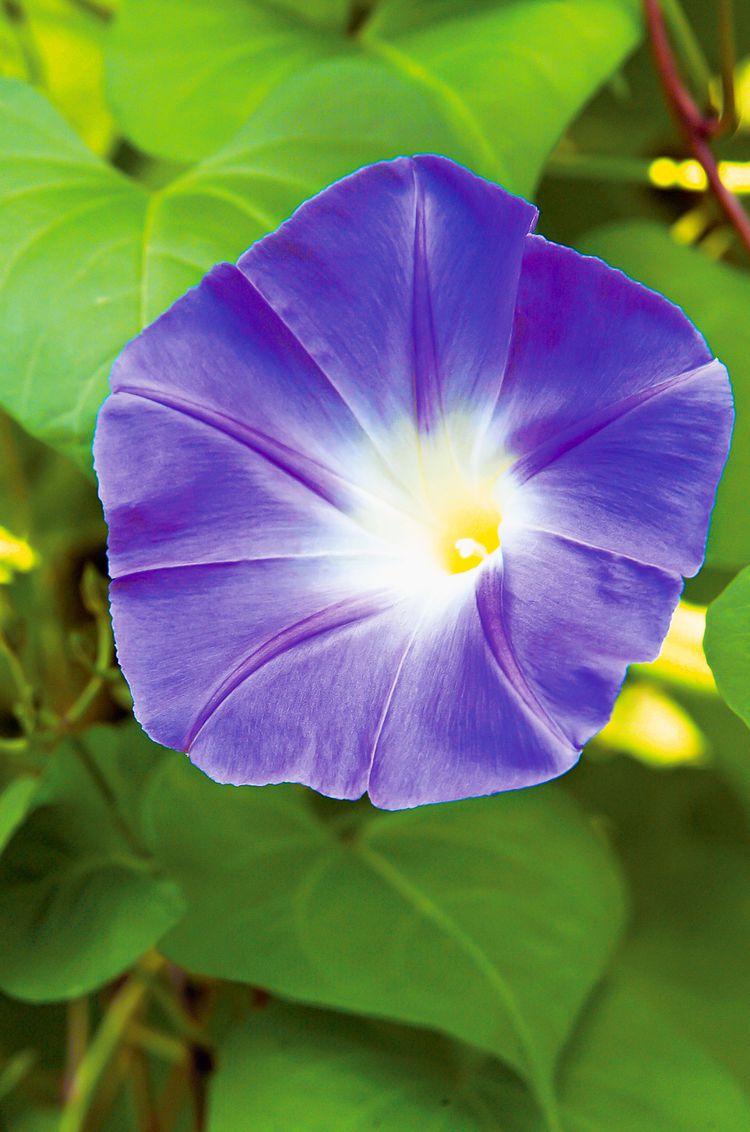How to Plant and Grow Morning Glory

Morning glory, a flowering vine with purple, blue, and pink flowers, grows easily wherever you plant it as long as it gets plenty of sun and a bit of afternoon shade. This annual, hardy in Zones 2-11, is grown from seeds. It adds color to large walls, fences, or trellises in a vertical display of flowers.
Morning glory is toxic to dogs, cats, and horses.
Morning Glory Overview
| Genus Name | Ipomoea |
| Common Name | Morning Glory |
| Plant Type | Vine |
| Light | Sun |
| Height | 3 to 8 feet |
| Width | 5 to 20 feet |
| Flower Color | Blue, Orange, Pink, Purple, Red, White |
| Foliage Color | Blue/Green |
| Season Features | Fall Bloom, Reblooming, Summer Bloom |
| Special Features | Attracts Birds, Good for Containers, Low Maintenance |
| Zones | 10, 11 |
| Propagation | Seed, Stem Cuttings |
Where to Plant Morning Glory
Plant morning glories in a location where they'll get lots of sun every day. It climbs naturally on whatever it's planted near. Use them to cover up an unsightly chain-link fence, for example. Or grow them on a trellis to provide a living privacy screen for your deck, patio, or balcony.
How and When to Plant Morning Glory
Start morning glory vines in early spring by sprinkling seeds where you want them to grow. Sow the seeds about 1/4 inch deep and a few inches apart. Watering regularly promotes blossoming, though it may take a few months to see any flowers.
Morning Glory Care Tips
These fast-growing flowering vines are easy to care for.
Light
Morning glories grow best—and blossom most prolifically—in full sun, so plant them where they'll get at least 8 hours of direct light per day during the growing season.
Soil and Water
Spreading a 2- to 3-inch-deep layer of mulch over the soil after you plant them will help keep weeds at bay and allow the soil to stay moist longer, so you have to water less often. Once established, they're somewhat drought-tolerant, but the plants look best if watered regularly. Otherwise, their large, heart-shaped leaves tend to wilt during the heat of the day.
Temperature and Humidity
Morning glories will grow whether it's warm or cold. They can even live through early frost and continue to flower. Grow morning glories as annuals in colder locations where temperatures approach freezing in the winter and as a perennial in warmer tropical or subtropical climates. They thrive in both arid and humid environments.
Fertilizer
Use a low-nitrogen fertilizer every month during the growing period to fertilize morning glories. For more flowers, use a high-phosphorous product.
Pruning
Morning glories don't usually require pruning except in fall after frost has killed the foliage. But if the plants start to grow larger than you want and begin to get out of hand, you can prune them back during the growing season without harm.
Pests and Problems
Wildlife love to eat morning glory flowers. Deer, groundhogs, rabbits, and other critters will chew on the lower blooms of morning glory vines, causing damage to the plants. The best way to prevent them from eating your vines is to build a 5-foot high fence around the plants. Morning glory is also susceptible to fungal diseases like leaf spot and white blister.
How to Propagate Morning Glory
If you live in an area with short summers, it's helpful to plant morning glory seeds six to eight weeks before your last expected frost date in spring to help give them a head start on the season. Otherwise, purchase transplants from your local garden center and put them out after all danger of frost has passed.
Morning Glory Companion Plants
Mandevilla
A classic tropical vine, mandevilla adds vertical color to your garden. It has big showy blooms that last all summer it's low-maintenance. Zones 10-11
Black-Eyed Susan Vine
Black-eyed Susan vine has cheerful yellow blossoms that bloom abundantly from midsummer until the first frost. Zones 10-11
Passionflower
Passionflower vine adds a tropical ambiance to your garden. In northern climates, it can be treated as an annual or houseplant. Zones 6-10